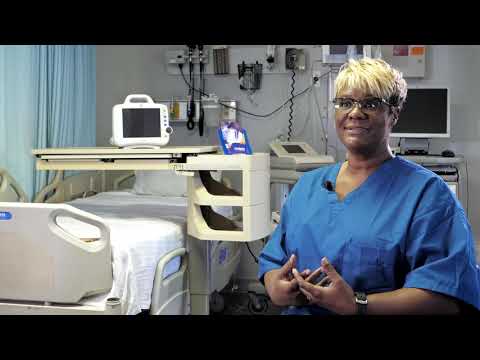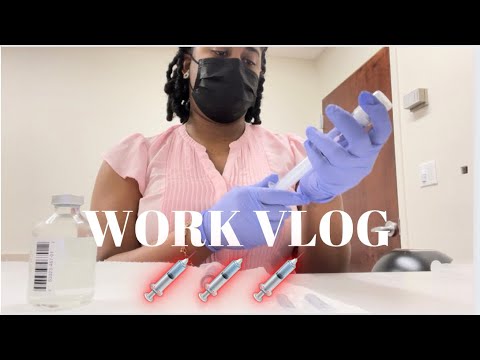Different Job Titles for Medical Assistants
Contents
- Job titles for medical assistants
- Duties of a medical assistant
- Skills needed to be a medical assistant
- Education requirements for medical assistants
- Certification requirements for medical assistants
- Salary expectations for medical assistants
- Job outlook for medical assistants
- Pros and cons of being a medical assistant
- What to expect when working as a medical assistant
- Tips for those considering a career as a medical assistant
Medical assistants play a vital role in the healthcare industry. They provide support to doctors and other medical staff, and perform a variety of tasks to keep the medical office running smoothly.
While the job title of medical assistant is fairly straightforward, there are actually a few different types of Medical assistants each with their own specific duties. In this blog post, we’ll explore the different types of Medical Assistants and what they do.
Checkout this video:
Job titles for medical assistants
Medical assistants hold a very important position in the medical field. They are responsible for providing clerical and administrative support to doctors and other medical staff. Without them, the medical field would grind to a halt.
There are various job titles for medical assistants, depending on their specific duties and responsibilities. Here are some of the most common:
Clinical medical assistant This type of medical assistant is responsible for performing duties related to patient care. This may include taking vital signs, administering medication, and assisting with diagnostic tests.
Administrative medical assistant: As the name suggests, this type of medical assistant is responsible for performing administrative duties. This may include scheduling appointments, maintaining patient records, and handling billing and insurance paperwork.
Medical office manager: A medical office manager is responsible for managing all aspects of a medical office or clinic. This may include hiring and training staff, overseeing finances, and coordinating patient care.
Duties of a medical assistant
Medical assistants play an important role in the healthcare industry. They are responsible for a variety of tasks, including taking medical histories, scheduling appointments, preparing patients for exams, and more. Medical assistants must be able to multitask and be detail-oriented. They must also have excellent people skills, as they will be interacting with patients on a daily basis.
Skills needed to be a medical assistant
Medical assistants perform a variety of duties to support the work of physicians and other health professionals. They may take medical histories, measure patients’ vital signs, document patients’ care, prepare laboratory specimens or perform basic laboratory tests. They also may give medications as directed by a physician or under the supervision of a registered nurse. Most medical assistants have postsecondary education such as a certificate or diploma from a medical assisting program. Some states require medical assistants to be licensed or certified.
Education requirements for medical assistants
Medical assistants are Healthcare professionals that work alongside licensed physicians in medical offices, clinics, and hospitals. They perform both clinical and administrative tasks. Depending on their employer’s needs, their duties can vary greatly from day to day. Medical assistants typically need to have a high school diploma or equivalent, although some jobs may require postsecondary education, and most states require certification.
Certification requirements for medical assistants
Medical assistants are unlicensed multi-skilled health care professionals who perform administrative and clinical tasks in medical offices, clinics, outpatient facilities, and other settings. Though they have varying job titles and responsibilities depending on their employer’s needs, most medical assistants have completed a postsecondary education program and passed a standardized exam to earn professional certification.
There are several certification organizations that offer professional credentials for medical assistants, including the American Association of Medical Assistants (AAMA), the American Medical Technologists (AMT), and the National Healthcare Association (NHA). While certification is not always required for entry-level positions, many employers prefer to hire certified medical assistants, and some states have enacted legislation that requires certification for certain tasks or job titles.
The AAMA offers the Certified Medical Assistant (CMA) credential, which is recognized in all 50 states. To earn the CMA credential, candidates must graduate from an accredited medical assisting program and pass the CMA Exam administered by the Certifying Board of the AAMA. The AMT offers the Registered Medical Assistant (RMA) credential, which is also recognized in all 50 states. To earn the RMA credential, candidates must graduate from an accredited medical assistant program and pass the RMA Certification Exam administered by AMT. The NHA offers the Certified Clinical Medical Assistant (CCMA) credential, which is recognized in 47 states. To earn the CCMA credential, candidates must pass an exam administered by NHA.
In addition to these three primary certification organizations, there are several other organizations that offer credentials for medical assistants. The National Center for Competency Testing (NCCT) offers theNational Certified Medical Assistant (NCMA) credential, which is recognized in 44 states. The National Healthcareer Association (NHA) offers both a Phlebotomy Technician Certification (CPT) credential and a Clinical Medical Assistant Certification (CCMA). And finally, HCPro offers a Certified Graduate Learner perceptor designation for preceptors who mentor students during their clinical rotations as part of an accredited medical assistant program
Salary expectations for medical assistants
medical assistants typically have an associate degree or diploma from an accredited medical assisting program, although some jobs may require certification. Some medical assistants choose to become certified through organizations such as the American Association of Medical Assistants or the National Healthcare Association. The Bureau of Labor Statistics reports that the median salary for medical assistants was $34,800 in 2018, with the top 10 percent earning more than $49,560.
Job outlook for medical assistants
Medical assistants are in demand in a variety of settings, from hospitals to private medical practices. They typically work full time, and their schedules may include evenings and weekends. Some medical assistants have completed postsecondary education programs that prepare them for the job, while others have learned through on-the-job training.
Medical assistants perform a variety of duties, including taking medical histories and recording vital signs, explaining treatment procedures to patients, preparing patients for examination, and assisting the physician during the exam. They also may schedule appointments, help with insurance paperwork, do laboratory work, and instruct patients about medication and diet. With additional training, they may perform basic X-rays or give injections.
Employment of medical assistants is expected to grow much faster than the average for all occupations through the year 2022 as the healthcare industry expands due to technological advances and an aging population. Job prospects should be best for those who have completed formal education programs in medical assisting
Pros and cons of being a medical assistant
Medical assistants are in high demand due to the increasing number of patients visits to medical facilities and the aging population. They perform routine administrative and clinical tasks to keep the offices of physicians and other health practitioners running smoothly. The duties of medical assistants vary from office to office, but usually include preparing patients for examination, taking medical histories, recording vital signs, drawing blood, scheduling appointments and handling correspondence. Some medical assistants also help give injections and take X-rays.
The pros of being a medical assistant include having a stable job with good pay and benefits, as well as flexible hours. The cons include having to deal with sick people, working long hours, and sometimes having to work weekends or evenings.
What to expect when working as a medical assistant
Different Job Titles for Medical Assistants
The job title of medical assistant is a broad term that can encompass many different roles within the medical field. In general, medical assistants are responsible for providing support to doctors and other healthcare professionals in a clinical setting. However, the specific duties of a medical assistant can vary depending on the particular job title. Here are some common job titles for medical assistants, along with a brief description of the associated responsibilities:
-Clinical medical assistant: A clinical medical assistant provides direct patient care under the supervision of a licensed healthcare professional. Clinical duties can include taking vital signs, performing diagnostic tests, assisting with minor surgical procedures, and dressing wounds.
-Administrative medical assistant: An administrative medical assistant performs administrative tasks in a healthcare setting. Duties can include scheduling appointments, managing patient records, billing and coding insurance forms, and greeting patients.
-Laboratory medical assistant: A laboratory medical assistant works in a clinical laboratory setting and is responsible for performing diagnostic tests on patients’ samples. Duties can include preparing samples for testing, operating lab equipment, and interpreting test results.
-Research medical assistant: A research medical assistant works in a research laboratory or hospital setting and is responsible for assisting with research studies. Duties can include recruiting and screening participants, collecting data, and maintaining study records.
Tips for those considering a career as a medical assistant
Medical assisting is a career with many different job titles. The most common job titles for medical assistants are certified medical assistant (CMA), registered medical assistant (RMA), licensed practical nurse (LPN), and licensed vocational nurse (LVN). Depending on your state, you may also be able to find work as a medical assistant without certification.
The duties of a medical assistant vary depending on the job title, but the basics include taking patient vital signs, recording patient medical histories, scheduling appointments, and assisting with minor office procedures.
If you are considering a career as a medical assistant, here are a few tips to help you get started:
-Research the different job titles to find one that best fits your skills and interests.
-Check with your state’s licensing board to see if certification is required or preferred.
-Complete a Medical Assistant Training Program at an accredited school.
-Get experience by volunteering or working in a medical office before you start your career.







